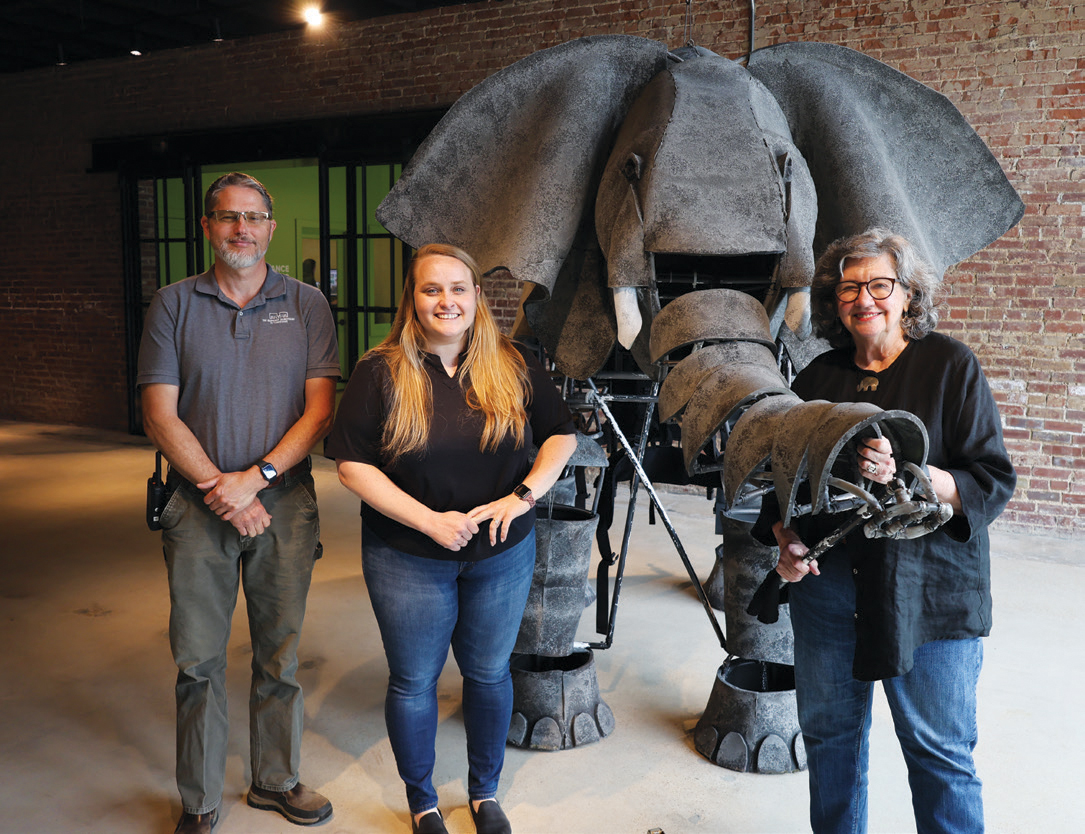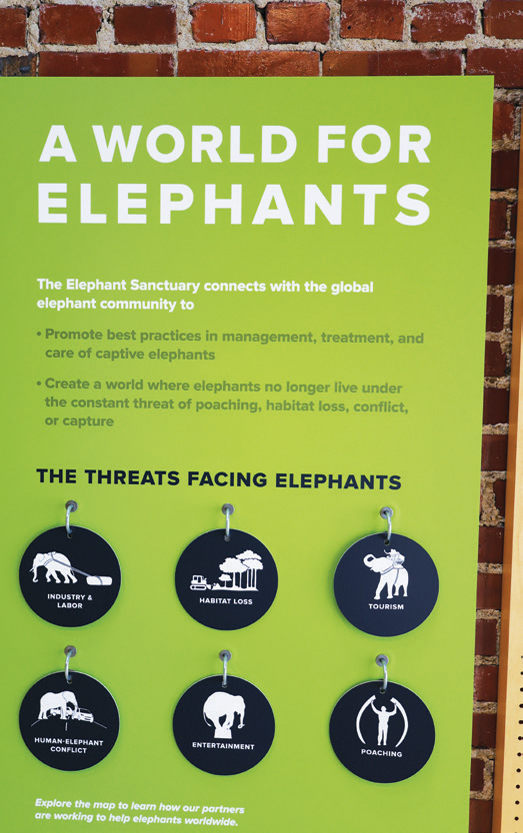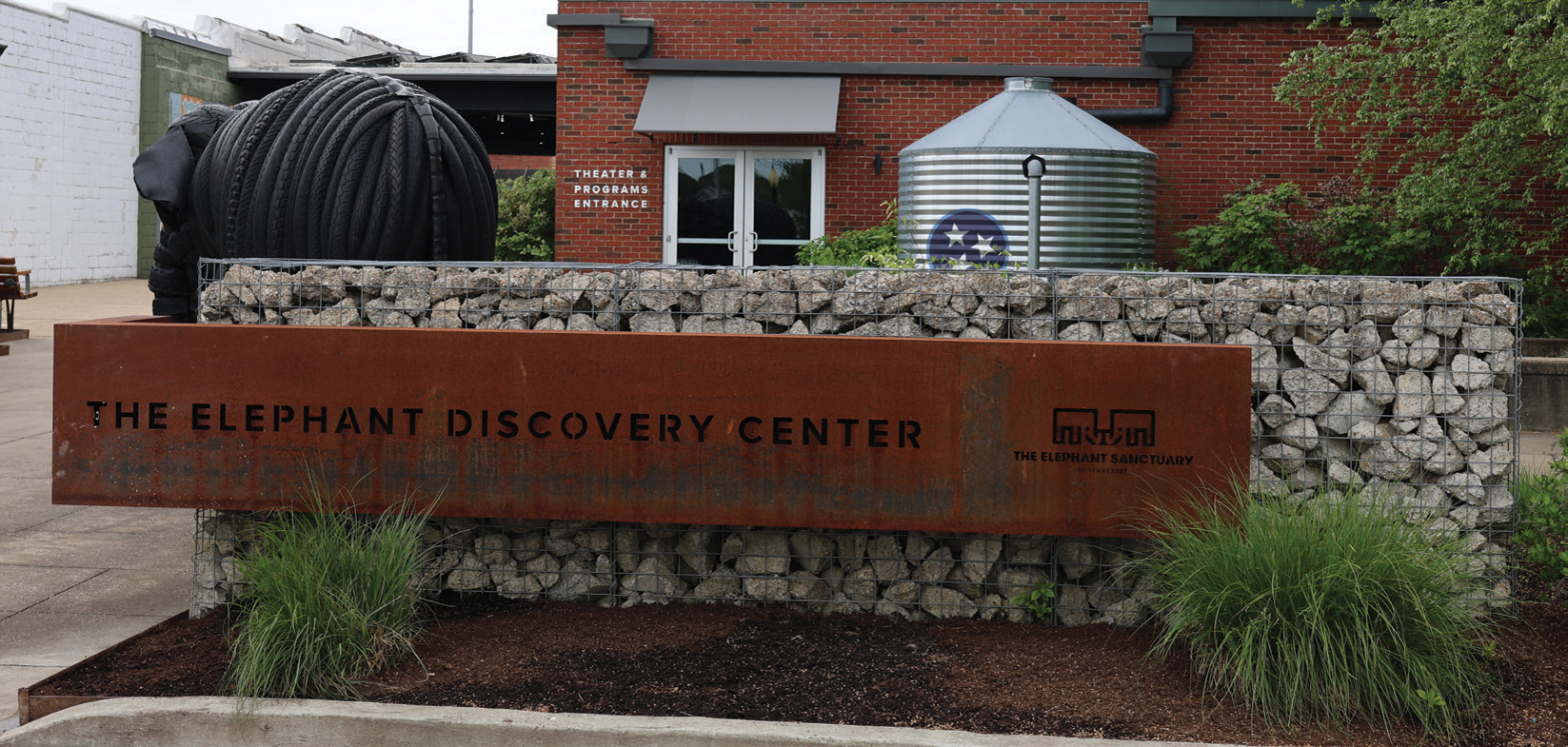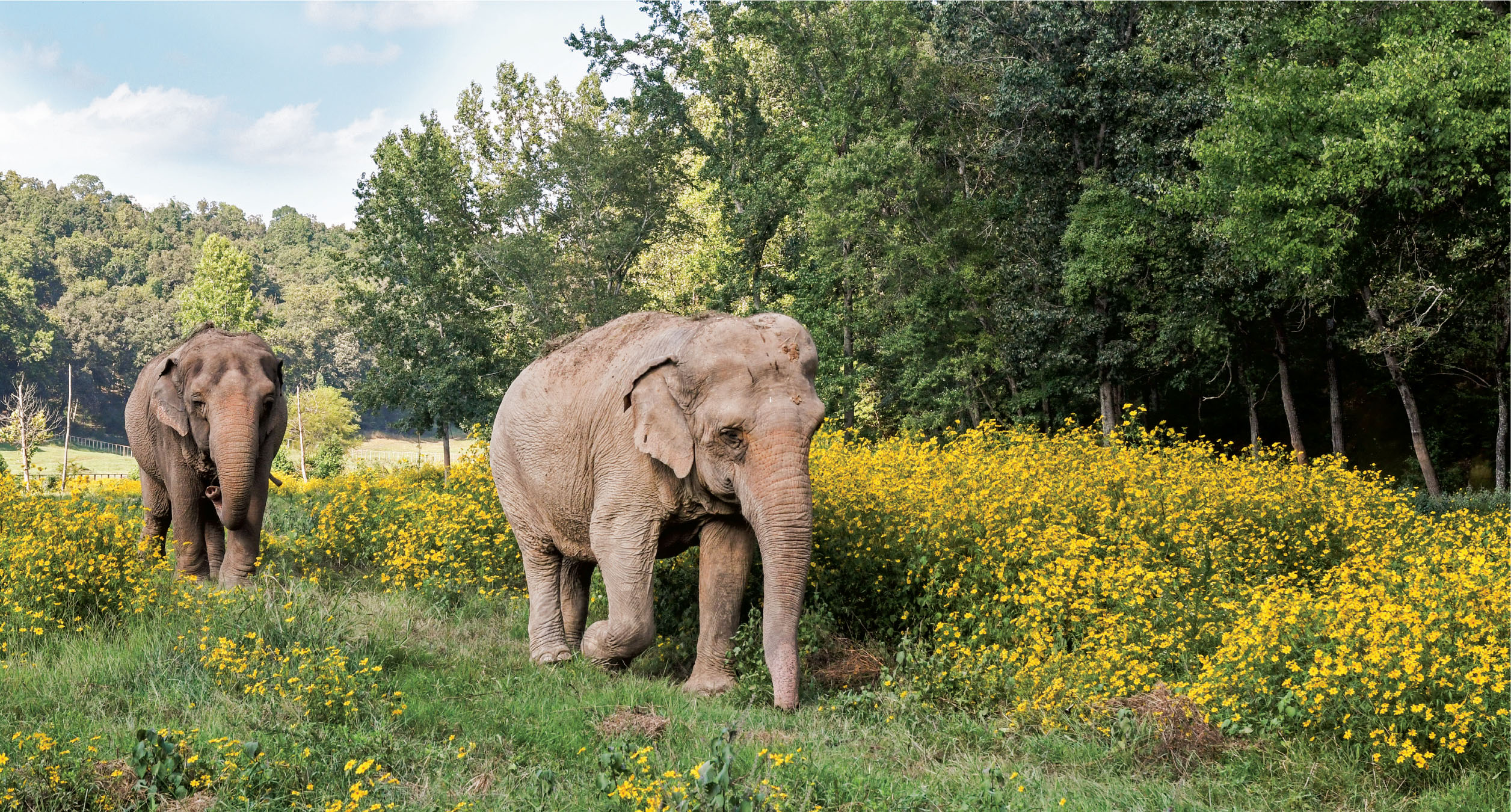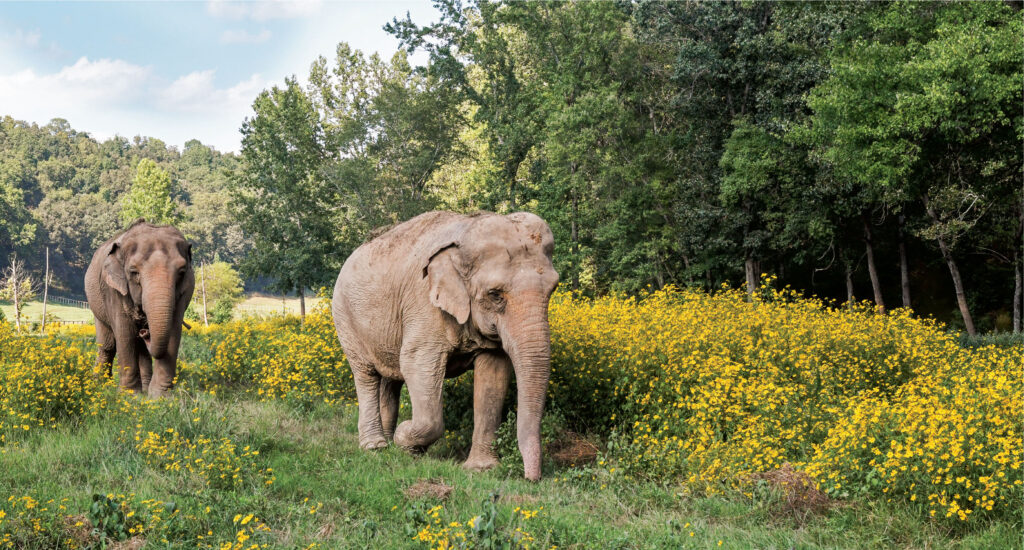Photographs courtesy of The Elephant Sanctuary
Meriwether Lewis Electric Cooperative has 4,115 miles of line across five counties and serves 36,707 members. The service area is also home to 12 elephants who live at The Elephant Sanctuary in the small town of Hohenwald. The Sanctuary might be a hidden gem in the Volunteer State, but the nonprofit organization has been doing some incredible work in Lewis County and around the world for three decades now.
“We are giving an elephant a home and a herd at The Sanctuary for the rest of their life, no matter how little or long,” said Laura Roddy, the education manager at The Elephant Sanctuary. “To say we have been doing that for 30 years now is exceptional, and I can’t wait to see how we grow from here.
Who knew Tennessee was perfect for elephants?
In 1995, Carol Buckley and Scott Blais were ready for their elephant, Tarra, to come out of the spotlight. Tarra had been a part of the performance world and even had a short stint at the Nashville Zoo before retiring. Buckley, Blais and other co-founders soon located 110 acres in Lewis County that met all their needs, from the rolling hills to the valleys to even the essentials like foliage, electricity and water. The land was also far enough away from the city so that Tarra and soon 33 more elephants over time could live out the rest of their lives in a way they were meant to — as if they were back in the wild. That’s when The Elephant Sanctuary was created.
What does the sanctuary do today?
Now 30 years later, The Elephant Sanctuary has the same purpose of providing a natural habitat refuge for elephants with lifetime care. However, it has grown tremendously in both size and impact. The Elephant Sanctuary is now the largest habitat for African and Asian elephants anywhere in North America, covering 3,060 acres. Over time, 34 elephants have called The Sanctuary their home with the help of 50 employees serving in various roles, including elephant caretaking, education and sustainability.
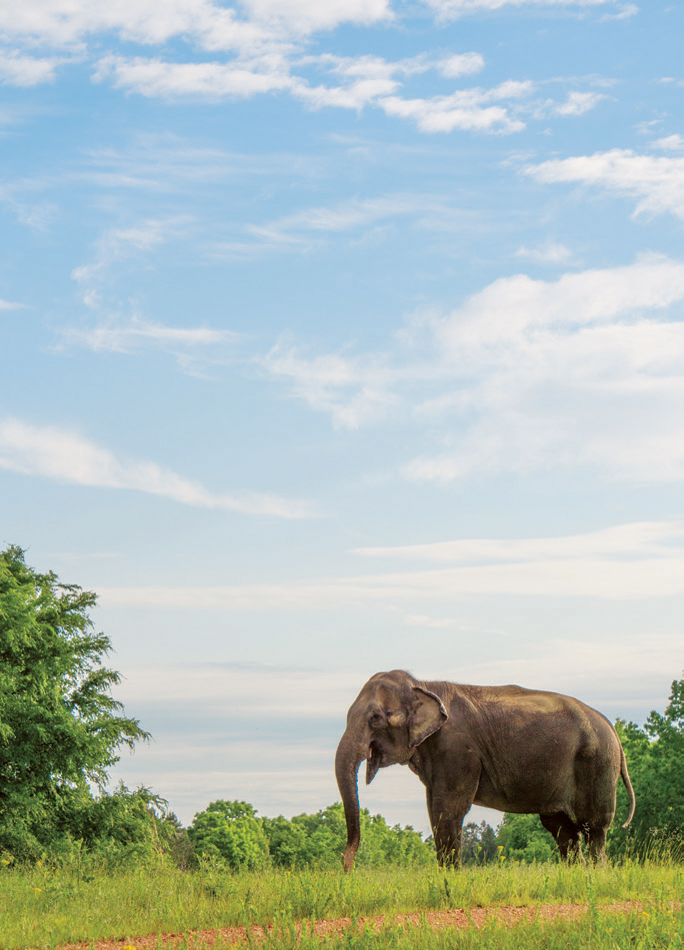
“It takes a village to take care of an elephant sanctuary,” Roddy said.
That village works together to not only provide a home for these animals but also to support and promote elephant welfare and conservation and to educate the public about elephant needs and challenges.
Who calls Hohenwald home?
Currently, 12 elephants — 10 females and two males — are roaming around on The Sanctuary grounds. Seven are African elephants and five are Asian elephants. Those are the species you would find in North American zoos, and they will all live out the rest of their lives at The Sanctuary.
All 34 elephants over the three decades have arrived at The Sanctuary in different ways. Many are just older, and their owners think it is best for them to retire in peace. Some elephants need more social opportunities. Some were part of U.S. Department of Agriculture confiscations and find much better care where they are now. Regardless of the reason why, The Sanctuary helps with the transition process of bringing in the elephants using the most comfortable way for the animal.

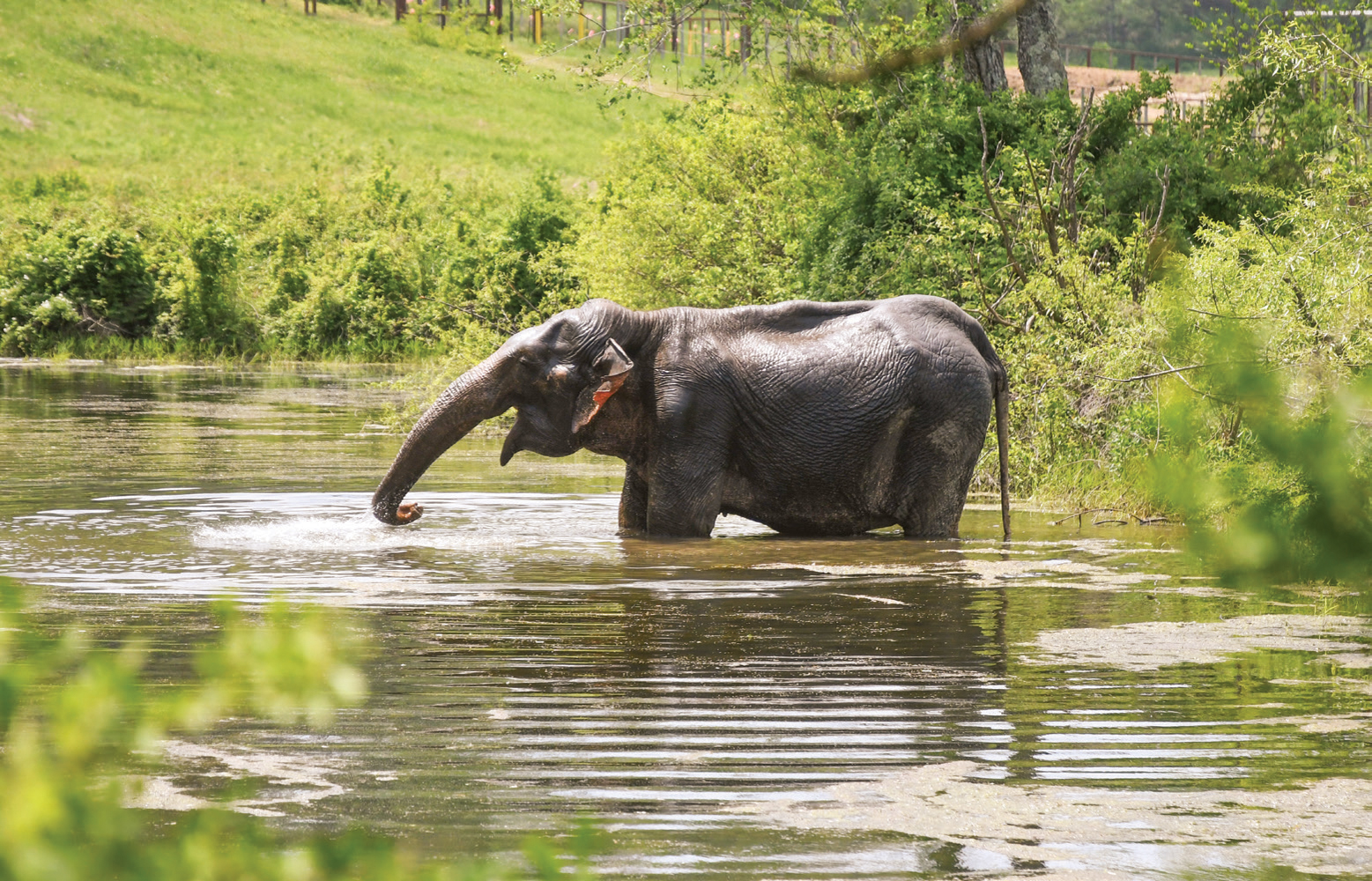
“Osh was the largest elephant to arrive at The Sanctuary so far, standing at 11 feet tall,” said Joe Rizzo, the director of planning and sustainability at The Elephant Sanctuary. “He had a specialty crate for transport, and all together, the truck stood 14 feet tall. We had to have a permit for every county we crossed to get here.”
Once the elephants arrive, they find thousands of acres mimicking African and Asian habitats filled with heated barns, spring-fed lakes, pastures, woodlands, miles of internal elephant-proof fencing and other elephants. They also have access to all the forage they can eat. Elephants are herbivores, consuming around 300 pounds of plants every single day. During the winter, the caretakers will help supplement that diet with hay, grains, fruits and vegetables.
“A lot of our elephants have a sweet tooth,” Roddy said. “Any day they get watermelon is a good day for everyone.”
How does waste turn into a resource?
The Elephant Sanctuary is in the business of making life better for elephants, but the organization is also making a great impact sustainability-wise for Lewis County and abroad.
“The Sanctuary goes beyond just championing eco-friendly practices,” said Janice Zeitlin, CEO and president of The Elephant Sanctuary. “It serves to align our broader mission with the well-being of our Tennessee neighbors and the world we share with elephants and all wildlife.”
The Sanctuary implements many organization-wide sustainability practices such as solar panels, composting food and waste, and, of course, recycling. In 2023, 89% of the waste produced from The Sanctuary was recycled, totaling to 133,829 pounds of cardboard, aluminum, steel, plastic, paper and glass. Catching rainwater across the habitat are 8,750-gallon cisterns, and that water is used to clean out the elephants’ barns.
“We look at everything that’s considered waste as a resource,” Rizzo said.
How is education the mission?
In 2019, the team at The Elephant Sanctuary decided they wanted to be able to share what they are doing with the public. While no visitor is allowed on the sanctuary grounds, anyone can now visit the Elephant Discovery Center on East Main Street in Hohenwald. Guests can walk into the center for hands-on self-guided exhibits and educational programming that explores more about elephants and the many ways they shape the world. The center’s Distance Learning Program hosts virtual field trips and is involved with hundreds of classrooms around the world.
“We love being able to educate people on elephants — both in human care and in the wild,” Roddy said. “We work to meet standards for each classroom and really just talk to them about what we’re doing here and the importance of sanctuary for elephants here and beyond.”Among the tools used at the center, on virtual field trips and online are the EleCams. They are cameras mounted on towers in the middle of the habitats, and through fiber internet service provided by MLEC subsidiary MLConnect, the cameras broadcast three different views of the elephant habitats to the rest of the world.
“It’s a great resource for our education programs because the elephants don’t see us watching them,” Rizzo said. “We get to observe them truly in their natural state.”
What’s next?
As The Elephant Sanctuary looks to the next 30 years, growth internationally and locally is in store. The plan is to continue helping elephants around the world in multiple continents and to expand facilities at both The Sanctuary and the Discovery Center to meet elephant and education needs. The team also has sights on increasing the footprint it leaves in the Lewis County community through more scholarships, classrooms, community clean-up days, enrichment days and more.
“It’s all about doing what’s best for elephants here and beyond,” Zeitlin said. “Now more than ever, though, we want to be connected with our community and show them the good we can do together.”
